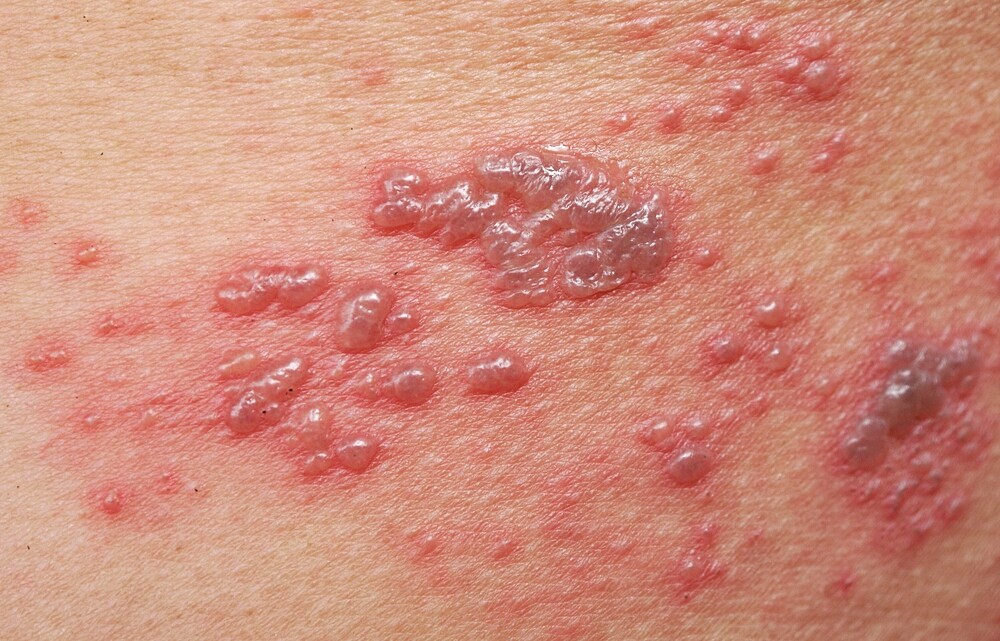Shingles may sound harmless – but behind it lies a painful viral disease. We will explain everything about the disease to you.
How do I recognise shingles?
The skin rash shingles (herpes zoster) usually manifests itself with fatigue and a dull pain in the chest area. After a few days, red spots and blisters appear on the chest, forming a band. Shingles is caused by the varicella zoster virus (VZV) and is a secondary infection after surviving chickenpox (varicella).
Why do you get shingles?
Almost all of us had to go through chickenpox as children. Although the childhood disease is associated with unpleasant itching, it is harmless for most people. However, as a result of chickenpox, the malicious varicella zoster virus nests in the nerve nodes of the spinal cord. Normally, the human immune system manages to keep the pathogens, which belong to the herpes family, under control for a lifetime.
So normally you do not need to be afraid of suddenly getting shingles from herpes viruses. Under certain conditions, however, you should be vigilant: If your body’s defences are attacked by factors such as strong medication, stress or an immunodeficiency disease like AIDS, it can be difficult for the immune system to keep the viruses in check and prevent shingles. The varicella zoster viruses can then spread rapidly through your body’s nervous system, implanting into nerve cells and causing shingles.
Which symptoms indicate the disease?
- Red, rosette-like skin rash, which appears belt-shaped, especially on the chest and lumbar spine
- Severe pain
- Weakness and lassitude
- (Sometimes) fever and itching
What is the typical course of shingles?
The initially red spots turn into pea-sized bubbles filled with a transparent or bloody liquid after a short time. The blisters burst after a few days. They are then covered by a crust. In some cases, the rash of shingles can leave long-term scars. In most cases, the body needs about a month for the symptoms to recede. If severe pain persists, the nerves may be permanently damaged. In this case we speak of a post-zoster neuralogy. The neuralgia should definitely be treated by a neurologist.
Is infection possible with herpes zoster?
Patients are only contagious at a certain stage of the disease: when the blisters have formed. The vesicles are the carriers of the virus-containing fluid. If someone around you has shingles, avoid direct physical contact at this stage, because you can quickly become infected through the fluid. However, once the blisters become encrusted, the risk of infection is eliminated.
Can there be complications?
If the zoster viruses spread to the face, they can lead to temporary paralysis at the affected area. Care should also be taken if the viruses have implanted themselves in the optic nerve: The conjunctiva and cornea can be affected, which in the worst case can lead to blindness. However, these cases are very rare.
Which treatment is applicable?
Young people who have only mild symptoms and in whom shingles has only affected the trunk or limbs can usually treat the disease by taking painkillers and applying antiseptic and desiccating creams. However, if you have shingles on your face or are at an advanced age, you should also take medication to prevent the spread of the varicella zoster virus. Therapy with these virustatics should be started at the latest three days after the onset of the disease. By the way: For patients over 50 there is now a vaccination against shingles.
For more detailed information about shingles, you can check out this article.

